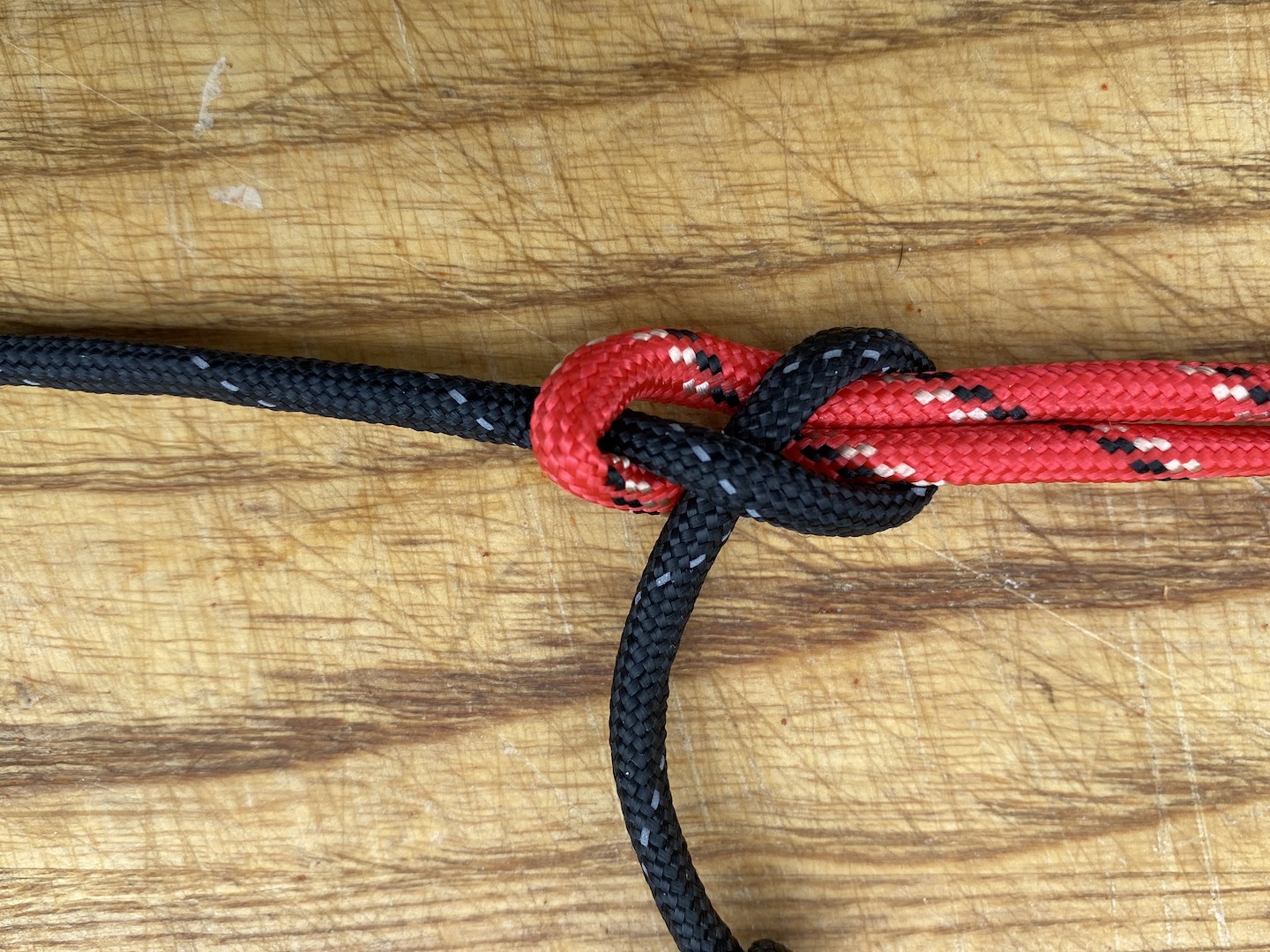Essential Knot Tying Skills
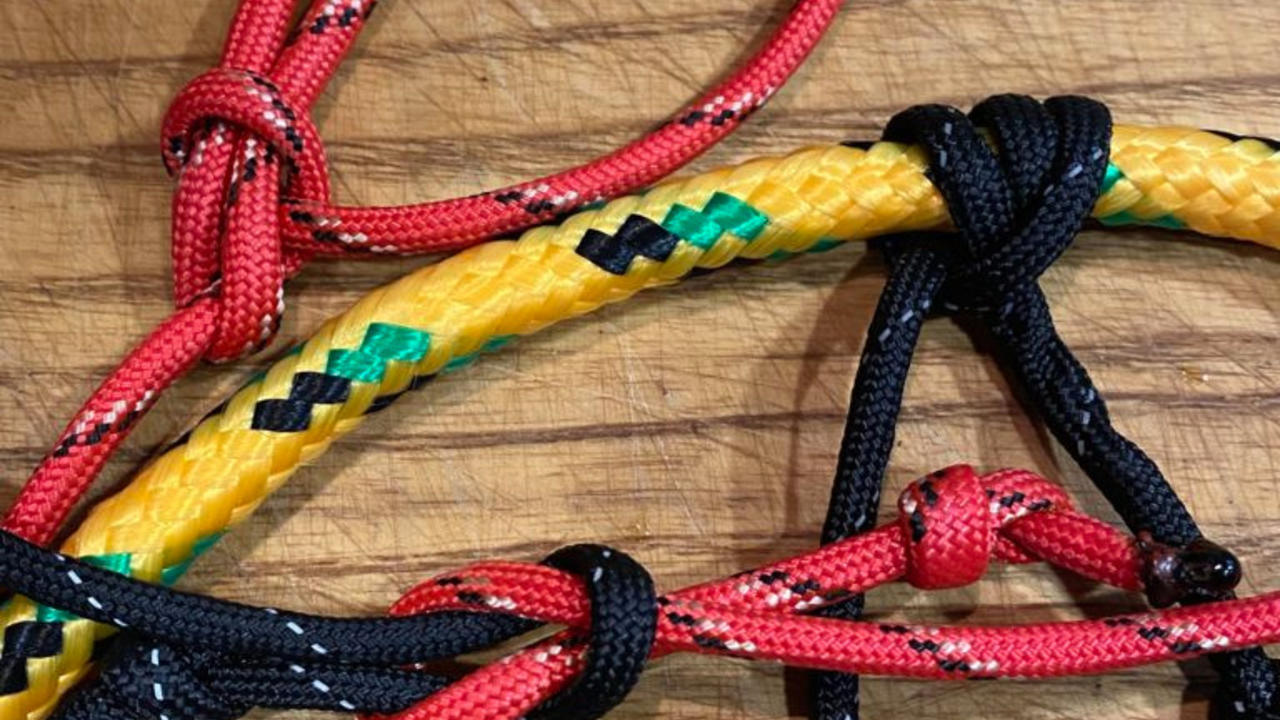
Knot tying skills are taken for granted way too often especially for those that are inexperienced in the outdoors. Knot tying skills are important in survival situations, performing first aid, when working over heights, working over water, climbing, and even during day-to-day chores on the homestead.
Although there are literally hundreds of knots that are used for many different applications, there are a few techniques that are truly essential. While hiking, camping, travel, and emergency situations, is it important to know how the do the following:
- Secure a line to a fixed object. For example a tent line secured to a stake or tree, tying up a horse to a post, securing the dog to a tree when camping
- Securing a smaller rope to one of a larger diameter. For example: tying a large diameter rope between two trees and then using that as a means to secure several animals or other objects
- Binding knots for bandages, securing bundles (firewood) for transportation
- Securely attaching two ropes together to form a longer line
- Forming a secure loop for hoisting
- Attaching a line to a fixed object so that the tension can be periodically adjusted.
- Ability to hoist barrels or buckets (water)
- Lashing poles together to build a shelter
- Securing a waterproof tarp for an emergency shelter.
Before we get down to the basics of knot tying skills, I think it is important to go over a few definitions. I do not want to get too technical. But you need to know the key differences between a knot, a hitch, and a lashing. Each of these has a different function.
A knot is made by fastening, intertwining or splicing one or more ropes.
A hitch is a rope attached to an object such as stick, a post, another rope, or even a ring. Hitches can either hold their place or can slide depending on the type of hitch you tie.
Lashing is used to secure two or more objects together. Lashing can be rope or some other flexible material.
The following are 17 essential knots. Some of these perform the same type of function so you may not have to know all of these. However, before heading out into the outdoors or even working on the homestead, learn these essential knots.
TABLE OF CONTENTS
1) SQUARE KNOT
2) GRANNY KNOT
3) SHEET BEND
4) CARRICK BEND
5) BOWLINE
6) CLOVE HITCH
7) TWO HALF HITCHES
8) FIGURE EIGHT
9) TAUT LINE HITCH
10) TIMBER HITCH
11) PRUSIK KNOT
12) MAN HARNESS
13) FISHERMAN'S KNOT
14) ROLLING HITCH
15) BARREL HITCH
16) TRIPOD LASHING
17) SQUARE LASHING
18) FINAL WORDS
19) ADDITIONAL POSTS OF INTEREST
Square knot
The square knot, also known as the reef knot, is most likely the best known knot. It is used with two ropes of similar thickness or two ends of the same rope
This knot is NOT reliable when used with two ropes or lines of different diameter. It will slip if not under tension or when used with nylon rope, which is often used for marine application.
Use of the square knot: Tying up a bundle of fire wood, tie bandages in first aid because it sits flat, used as a surgical knot, secure boot laces to prevent them from untying while walking through mud or brush
You should note that there are key differences between the granny knot (used to tie your shoes), the square knot, and the sheet bend. The square knot is often tied incorrectly into a granny knot. If you are attaching two ropes together when someone’s life is at stake, a bend is a superior knot. That will be covered next.
Steps to tie a square knot






At this point, tighten the knot and it is complete.
Granny Knot
This knot is used to secure a rope or line around an object. It is a binding knot but it is inferior to the square knot. I include it hear because is resembles the square knot. Most people mistakenly tie a granny knot when they think they are tying a square knot. It is important to know the difference.
The square knot and granny knot should never be used to tie two ropes together.
Uses of the granny knot: Bind a bundle of fire wood, tie boot laces
Steps to tie a Granny knot



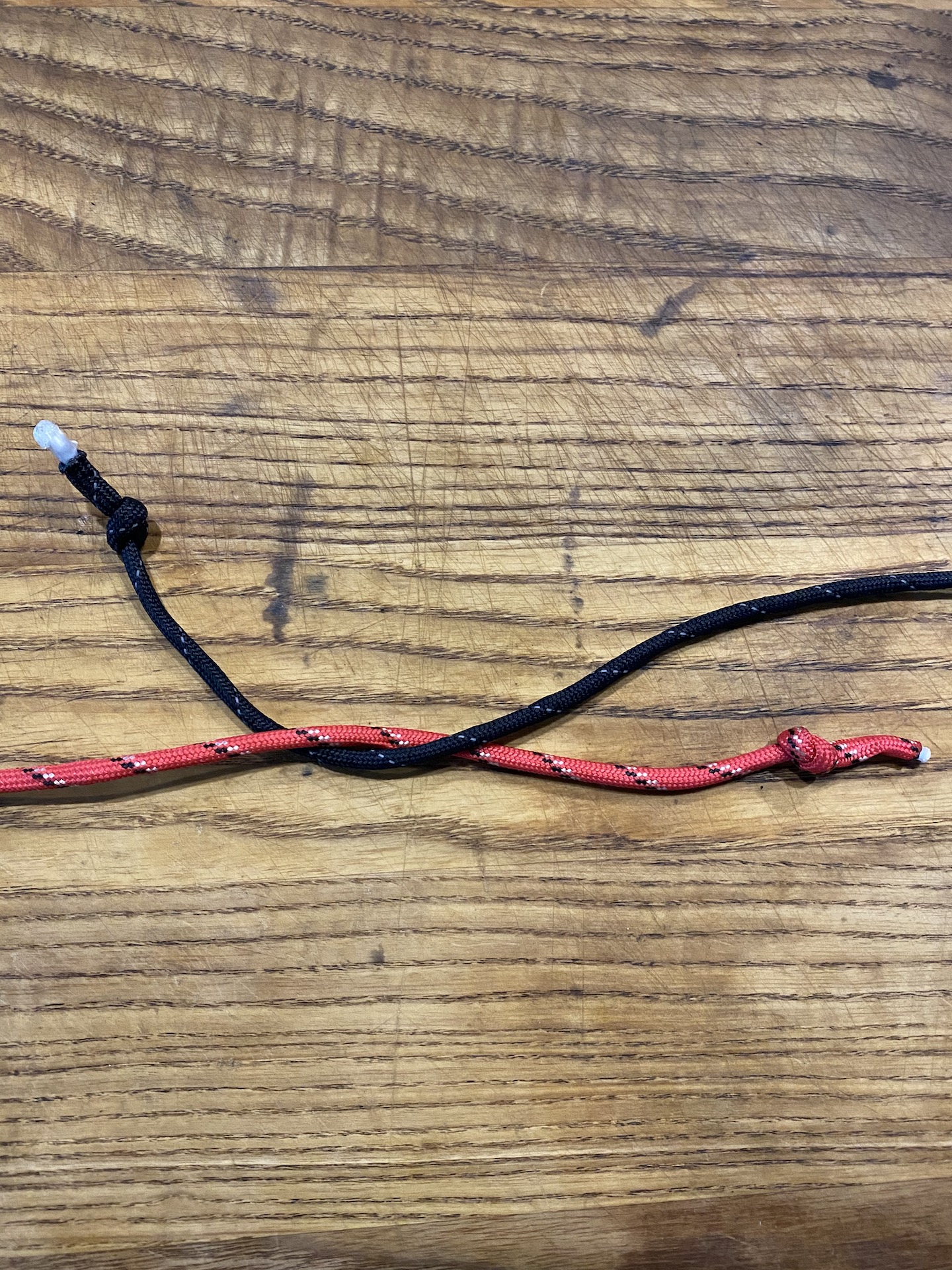



Tighten both ends and this knot is complete.
Sheet Bend
This knot is also known as the Weaver’s knot. The name is derived from its use of bending ropes to sails (sheets).
The Sheet Bend is particularly useful for connecting two ropes of different diameter.
Steps to tie the Sheet Bend





Carrick Bend
This knot is also known as the sailor’s breast plate. It is commonly used to connect two lines together. It is particularly useful when tying together heavy rope or cable that tends to be stiff. It does not jam even after applying a heavy load.
Uses of the Carrick bend: tying two lines together, connecting heavy rope or cable








Bowline
This knot is so useful it is considered one of the basic four knots used for marine application. It is very easy to tie and untie if it is not under a load.
Uses for the bowline: to form a secure loop at the end of a line. That loop can then be used to secure an object such as tying a boat to a dock. The loop can also be attached to an object before finishing the knot and then used to hoist that object. This is a very useful knot if you are a scuba diver and need to hoist an object out of the water.






Clove Hitch
This type of hitch provides a simple way to attach a rope to a pole, a post, or a ring. It is also the first knot tied when you start some form of lashing. It should be used with some caution because it can come untied if constant pressure is not maintained on the line or if the object it is tied to starts to rotate.
Uses: attaching a rope to a fixed post, pole, or ring. To start a lashing, basic binding knot.





Two Half Hitches
This is reliable knot that is used to secure a line to a tree or a pole. It is ideal for building shelters and will hold even if it is not under tension. When tension is released, it is easy to untie.






Figure Eight
This is basically used as a stopper knot. For many uses it replaces the simple overhand knot. It is tied at the end of a line to prevent it from running out of a retainer device. This is especially useful if you are climbing or hoisting a heavy object.





Taut Line Hitch
This is a hitch that is particularly useful with lines under tension. It forms and adjustable loop around an object and is used to periodically adjust the length of a line in order to maintain tension. In the absence of some form of tensioning device, this is a great knot for tying up a tent.







Timber Hitch
This is another secure knot used to attach rope to a post or any other cylindrical object. It is also known as a Bowyer’s knot because it is used to attach a bow string to the end of a long bow. It you need to lower a long object, the addition of a half hitch in front of the timber hitch creates even more security.






Prusik Knot
This is actually a friction hitch that attaches a loop of rope or cord to another rope. It is commonly used in rescue work, mountaineering, and climbing. It forms a secure loop that is movable. Consequently it is useful for ascending or descending a line.
 Prusik Knot Complete
Prusik Knot Complete











Man Harness
This is a loop formed in a line for non-critical purposes. It is often used when several people are pulling a heavy load. One loop is formed for each person assisting with the load.









Fisherman's Knot
This knot is actually a special bend knot that is used to tie two lines together. It works well when joining thin, slippery, or even stiff material.








Rolling Hitch
The rolling hitch is a simple friction knot. It is used to attach a rope to a pole, rod, or another rope. Historically, this type of hitch was used to attach dogs to a common leader line.
It is important to tighten this hitch before applying any load. Otherwise it may not hold.







Barrel Hitch
This knot was named for its use in hoisting cargo onto a ship. It is a secure means of hoisting barrels, buckets, or other cylindrical objects. It is also commonly used in construction for hoisting heavy buckets.
It is made by first standing the barrel on the lifting rope. Then tie a simple over hand knot across the top. Spread the over hand knot until it is wide enough to fit over the top of the barrel. Then secure the loose end of the rope with a bowline. Then lift the object. Keep in mind that the top portion of the hitch must be located higher than the center of gravity of the object being lifted. Otherwise it will tip.
This hitch also makes a great bucket handle if the wire handle breaks off. Just tie the loose ends into a square knot. Remember not to use the square knot for hoisting. The bowline is more secure.





Tripod Lashing
The tripod is a sturdy and versatile piece of camping equipment. It can be used to hold cooking pots over a fire, make shelters, hold heavy gravity fed water filters, and numerous over camping fixtures.
First collect three poles of nearly identical thickness and length. Lay these on the ground side by side. Tie a clove hitch to one of the outside poles and leave a long tag. Wrap all of the poles with the lashing 4 to 6 times. On the last turn, wrap the line between the poles twice working your way back to the original pole with the clove hitch. Finish by tying the loose end to the long tag left on the clove hitch.



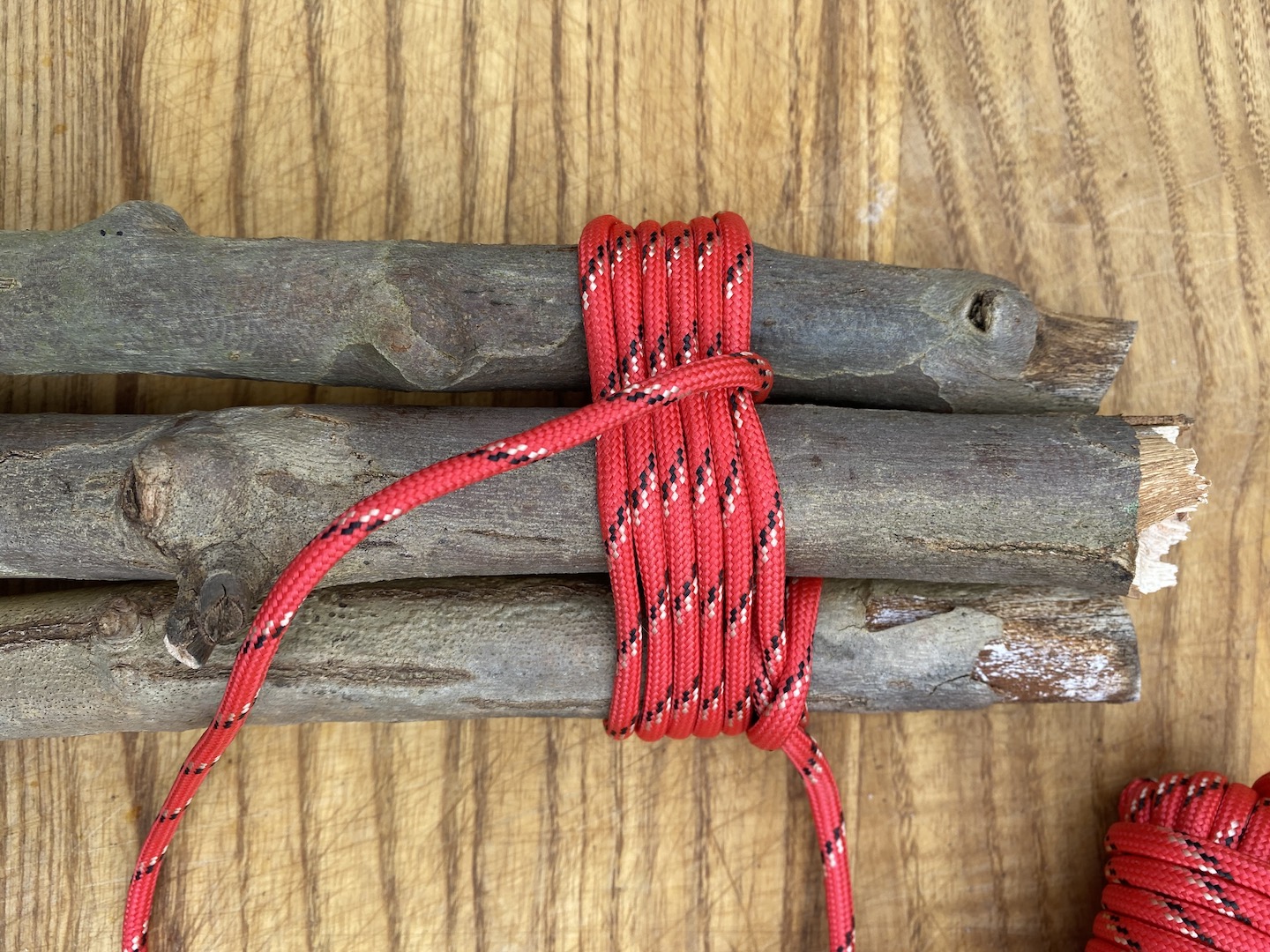
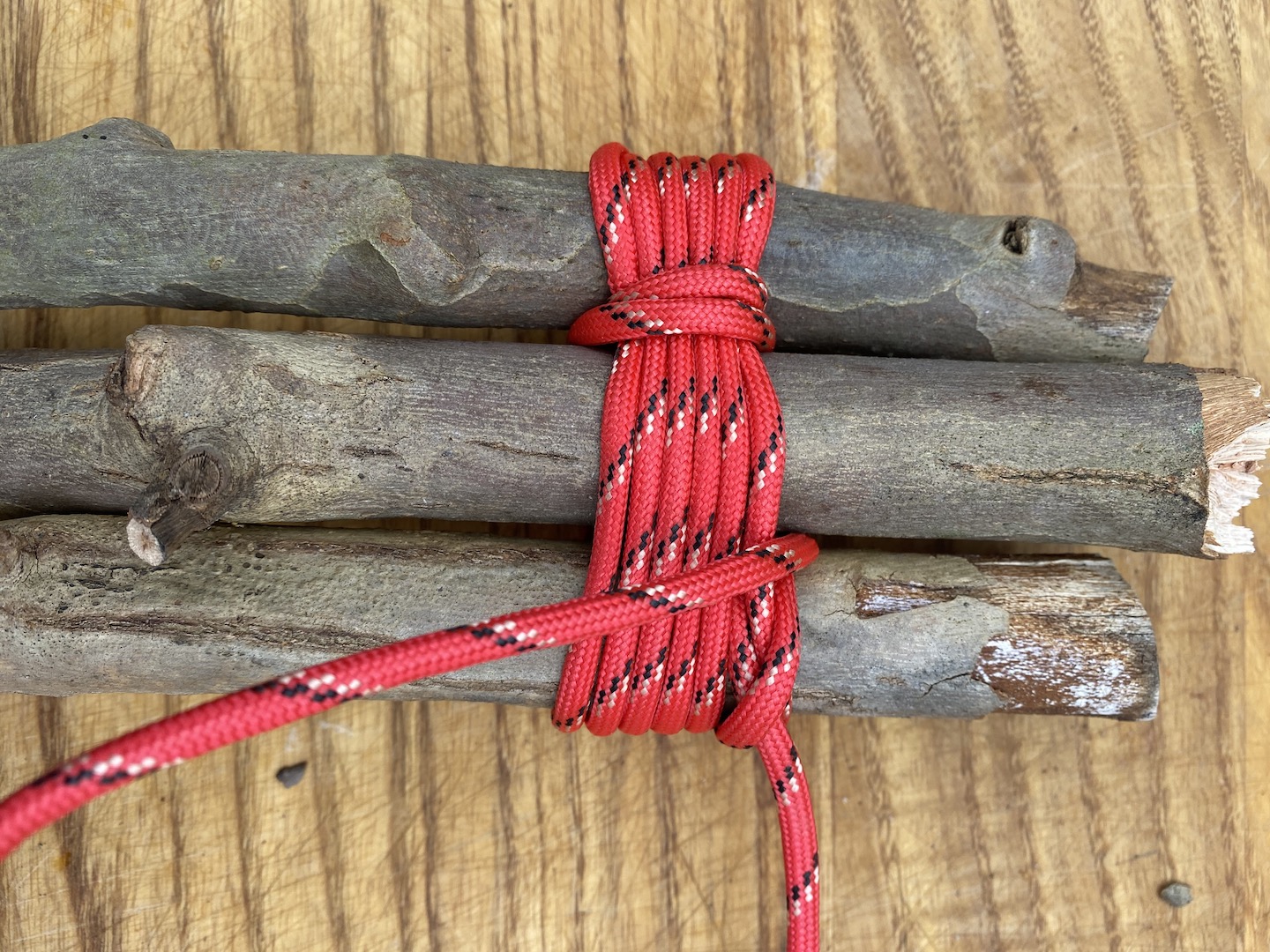


Square Lashing
This knot is used to bind two poles together. Most commonly, but not always, the poles are at right angles to one another. It is a weight bearing knot and can be used to build shelters, ladders, furniture, a bed, emergency stretcher, and even bridges.
There are a couple of ways to finish this knot. I have illustrated one way. But a second way would be to tie a square knot using the free end from the Clove hitch that started the lashing.





















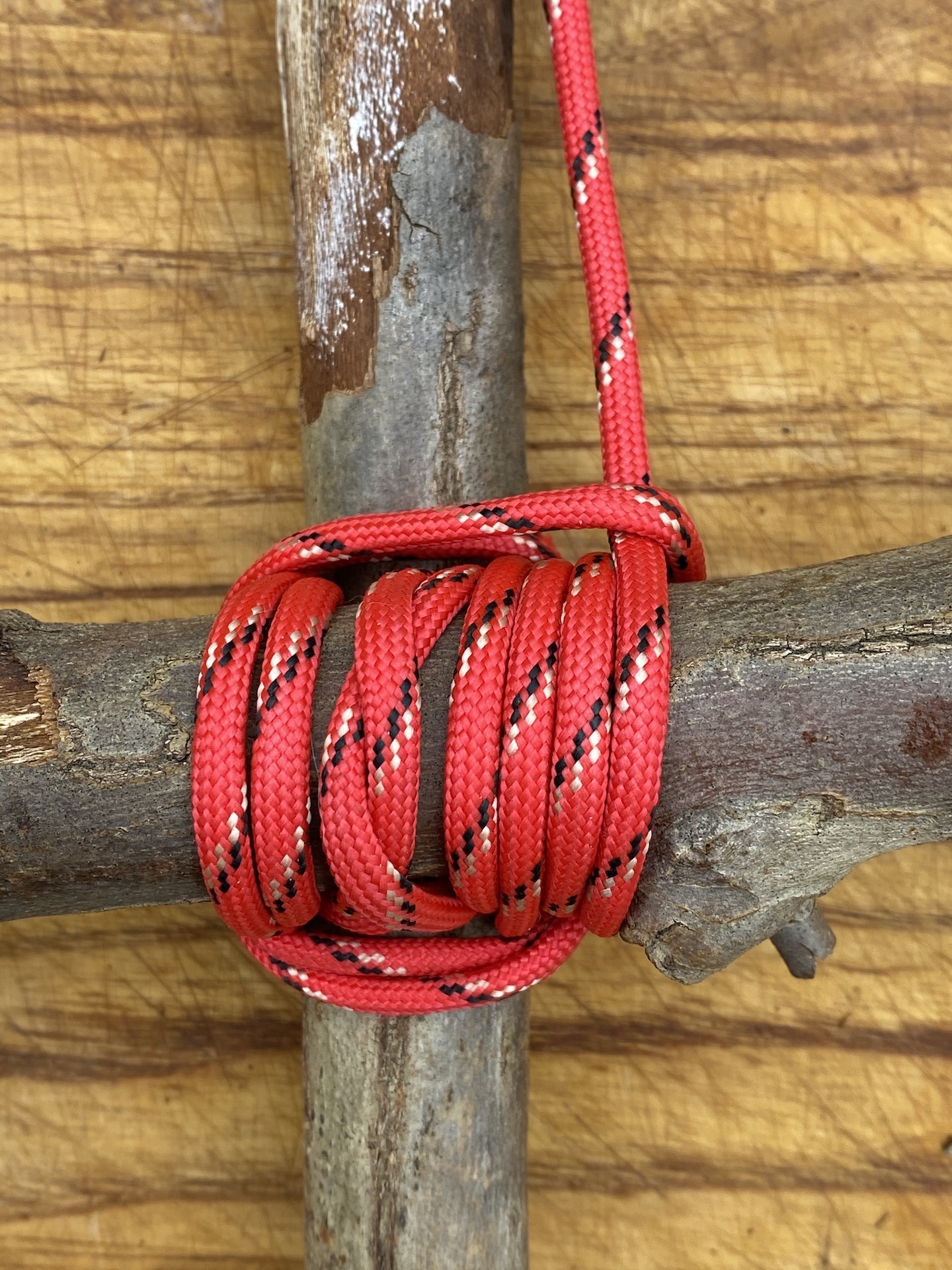



Final Words
As active as I am in the outdoors, these knots have served me well in many different situations. Hiking, camping, travel, cutting timber, and even scuba diving. I think essential knot tying skills are critical and happen to be a highly underrated skill. So, practice, practice, practice.
I hope you have found this helpful.
Additional Posts of Interest
How to Build and Maintain a Fire
How to Choose the Best Water Filter
The Ten Essentials Needed for Survival
Go off grid and live well,
Patrick
Stay connected with us to receive regular updates.
Join our mailing list to receive the latest news and updates from our team. We always respect your privacy. Your information will never be shared.


